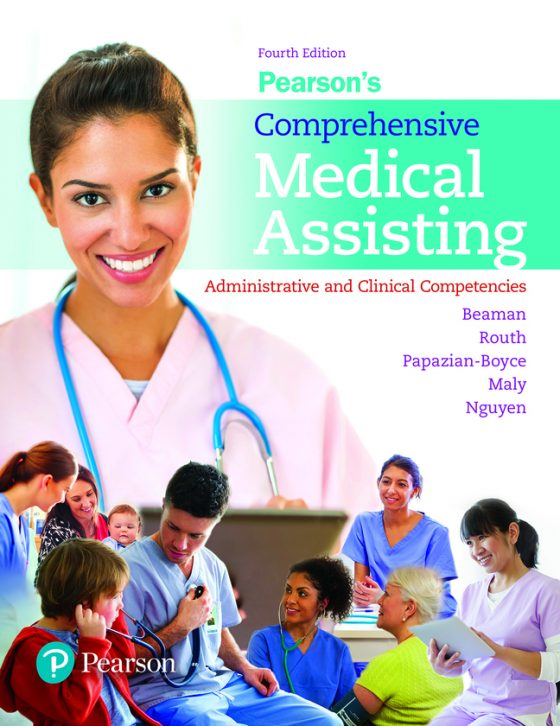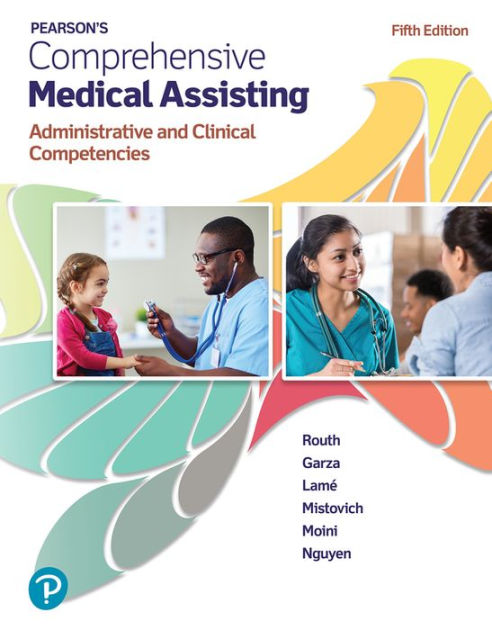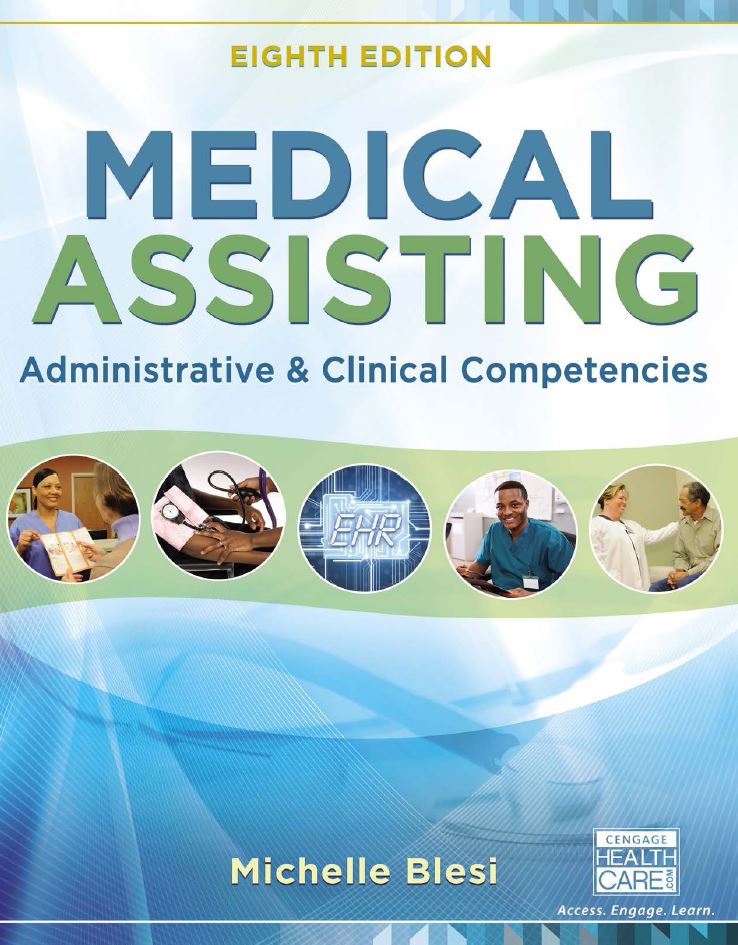Comprehensive Medical Assisting Administrative And Clinical Properties Free Pdf

In a landscape increasingly shaped by the demand for skilled healthcare professionals, the availability of comprehensive medical assisting resources is more crucial than ever. The recent emergence of a purported "Comprehensive Medical Assisting Administrative and Clinical Properties Free PDF" has sparked both excitement and concern within the medical community. Is this a legitimate boon for aspiring medical assistants, or a potential source of inaccurate and unreliable information?
This article delves into the details surrounding this widely circulated PDF, examining its claimed content, potential benefits, possible risks, and the perspectives of educators and professional organizations in the field. We aim to provide a balanced assessment of this resource and its implications for medical assisting education and practice.
The Allure of Free Resources
The promise of a free, comprehensive guide to medical assisting, covering both administrative and clinical aspects, is undeniably appealing. Medical assisting programs can be expensive, and readily accessible resources could potentially lower the barrier to entry for individuals seeking a career in healthcare. Such a resource, if legitimate and accurate, could supplement formal training and provide valuable self-study material.
Many individuals, particularly those from underserved communities, may find such free material invaluable. It can help level the playing field and provide equal opportunities to access career-advancing knowledge.
Content and Scope: A Closer Look
While the exact content of the "Comprehensive Medical Assisting Administrative and Clinical Properties Free PDF" may vary depending on the source, it generally claims to cover a wide range of topics. These often include medical terminology, anatomy and physiology, patient communication, medical law and ethics, insurance billing and coding, electronic health records (EHR), vital signs, assisting with examinations and procedures, medication administration, and basic laboratory procedures.
The depth and accuracy of coverage are critical factors to consider. A truly comprehensive resource would not only introduce these concepts but also provide detailed explanations, examples, and practical applications.
Potential Benefits for Aspiring Medical Assistants
If the PDF is indeed well-researched and up-to-date, it could offer several benefits. It could serve as a valuable supplement to formal medical assisting programs. It can reinforce learning and provide additional practice material.
It can act as a self-study guide for individuals preparing for certification exams. Many medical assisting certifications, such as the Certified Medical Assistant (CMA) offered by the American Association of Medical Assistants (AAMA), require a thorough understanding of both administrative and clinical principles.
For current medical assistants, the PDF might act as a quick reference guide for common procedures and protocols. This is particularly useful for those working in fast-paced clinical settings.
Concerns and Risks: The Dark Side of Free Information
The easy accessibility of free information comes with inherent risks. One of the most significant concerns is the accuracy and reliability of the content. Medical practices evolve rapidly, and information can quickly become outdated or even incorrect.
Furthermore, the source of the PDF may not be credible. The content could be plagiarized, contain errors, or lack sufficient detail. Relying on inaccurate information could lead to mistakes in clinical practice, potentially endangering patients and creating legal liabilities.
Another concern is the lack of proper instruction and supervision. Medical assisting involves hands-on skills that require practical training under the guidance of qualified instructors. A PDF alone cannot provide the necessary experience to perform procedures safely and effectively.
The Perspective of Educators
Medical assisting educators express cautious optimism regarding free resources. They acknowledge the potential benefits of supplementary materials. They emphasize the importance of verifying the accuracy and credibility of any free resource used by students.
Many educators recommend that students rely primarily on textbooks, course materials, and instructor guidance. These sources are typically vetted for accuracy and relevance. They align with established industry standards.
"While free resources can be helpful, they should never replace formal training," states Dr. Emily Carter, a medical assisting program director at a community college in Ohio. "It is crucial to ensure that students receive proper instruction and supervised practice to develop the necessary skills and knowledge."
Professional Organizations' Stance
Organizations like the AAMA and the National Healthcareer Association (NHA) emphasize the importance of accredited medical assisting programs. They advocate for standardized training and certification to ensure competency and patient safety.
These organizations may not explicitly endorse or condemn free PDFs. However, they strongly recommend that aspiring medical assistants pursue formal education. They stress that proper education includes practical experience and clinical rotations.
The AAMA offers its own resources and study materials for its CMA certification exam. They are designed to ensure that candidates possess the knowledge and skills necessary to perform their duties safely and effectively.
Verifying Credibility: A Crucial Step
If individuals choose to use the "Comprehensive Medical Assisting Administrative and Clinical Properties Free PDF," they must take steps to verify its credibility. Check the source of the PDF. Look for information about the author or organization that created it.
Cross-reference the information with other reliable sources, such as textbooks, professional journals, and reputable websites. Consult with medical assisting educators or experienced professionals to get their opinions on the accuracy and relevance of the content.
The Future of Medical Assisting Education
The availability of free resources like the "Comprehensive Medical Assisting Administrative and Clinical Properties Free PDF" highlights the ongoing need for accessible and affordable medical assisting education. While these resources can be helpful, they should not be seen as a replacement for formal training.
The future of medical assisting education may involve a blended approach. It will combine traditional classroom instruction with online resources and simulation-based training. This approach would provide students with a more flexible and engaging learning experience.
As the healthcare landscape continues to evolve, medical assistants will play an increasingly vital role. Investing in high-quality education and training will be essential to ensure that they are well-prepared to meet the challenges and demands of this dynamic profession.
Ultimately, while the allure of a free, comprehensive resource is understandable, a cautious and discerning approach is paramount. The health and well-being of patients depend on the knowledge and skills of competent medical professionals. Therefore, reliance on unverified sources carries significant risks.

![Comprehensive Medical Assisting Administrative And Clinical Properties Free Pdf [Test Bank] Comprehensive Medical Assisting: Administrative And](https://d2xurp8ps1la0n.cloudfront.net/media/thumbnails/file_22dd6a63-5396-4cc6-9ea1-35db55260829.png)



![Comprehensive Medical Assisting Administrative And Clinical Properties Free Pdf PPT - Download Book [PDF] Medical Assisting: Administrative and](https://image7.slideserve.com/12506568/medical-assisting-administrative-and-clinical-l.jpg)












